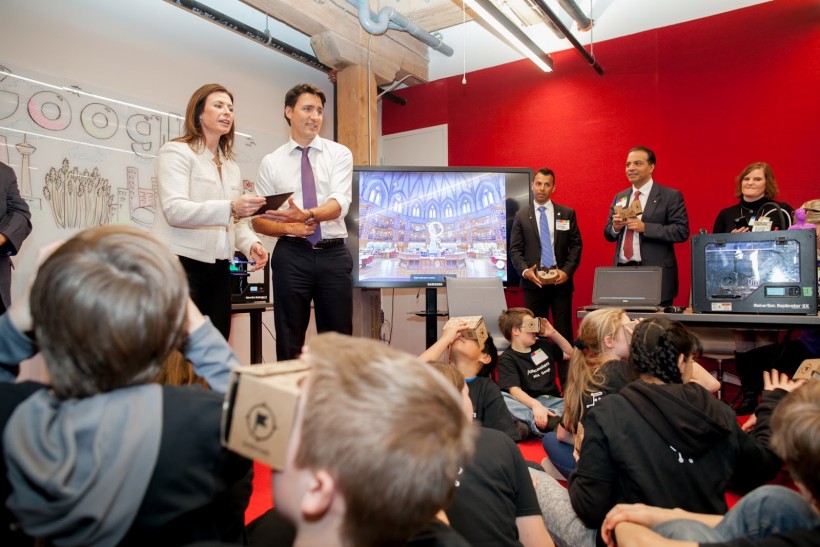The symbolism of Prime Minister Justin Trudeau’s visit to southern Ontario last week was tremendously important for his government because it gave important signals about its industrial strategy.
Trudeau toured the Toronto-Waterloo innovation corridor, announcing funding for a few key projects and opening Google’s shiny new Canadian engineering headquarters in Kitchener. And throughout the tour, he spoke about how important innovation is for the Canadian economy.
“I’m tremendously optimistic about the Canadian economy, and it’s not just because I’m standing in a place like this,” he told a cheering crowd in the lobby of the restored block that Google occupies.
“Canadians have always been forward-looking problem solvers. … We need a government that bets on Canada and invests in Canadian innovation.”
Trudeau Opens Kitchener's Google Office
The message is clear, the logic inescapable. The oil patch is now a rust belt, and the government is seizing on the development of new technologies as its best hope for our economic future. The question is what the government can do to support technology.
The discussion will probably focus on four areas:
•Don’t mess up what’s working
The federal government has some great initiatives that support innovation, like the National Research Council’s Industrial Research Assistance Program and the Canada Revenue Agency’s Scientific Research and Experimental Development program. There will always be budgetary pressures on programs, but the government should resist the temptation to cut back on programs that are working.
•Taxation of stock options
The recently formed Council of Canadian Innovators has already started lobbying the government to forgo a campaign promise to increase the tax on stock options. Growing Canadian tech companies need to attract top talent, and it becomes more difficult to lure people if the duty on their options looks punitive.
•The Trans-Pacific Partnership
This one’s tricky because tech entrepreneurs explicitly believe in opening up trade. But former Research in Motion co-CEO Jim Balsillie has warned that the deal includes clauses on intellectual property that could make Canada a “permanent underclass” in the innovation economy. The government will reveal within weeks how it will handle this. It’s difficult to predict which way it will go.
•Developing the Toronto-Waterloo corridor
This would be a hard political sell for much of the country, but improving transportation between Toronto and the Kitchener-Waterloo region would aid tech development across the country.
Kitchener-Waterloo is one of the world’s greatest centres for developing tech talent. Yes, the world’s.
Toronto is home to Canadian corporations and a lot of investors. They’re only 100 kilometres apart, but congestion in the Greater Toronto Area means it can take as much as three hours to travel one way between them.
A high-speed rail service would marry Kitchener-Waterloo engineering with Toronto’s capital. It would establish a centre of excellence in technology that would provide invaluable resources for the country, in terms of training, outsourcing, capital and assistance with sales.
It’s difficult to convince voters outside Toronto that this could help their regional economies, but startup ecosystems in places like Atlantic Canada and the Prairies would be strengthened if Toronto-Waterloo becomes one of the world’s great centres for innovation.










